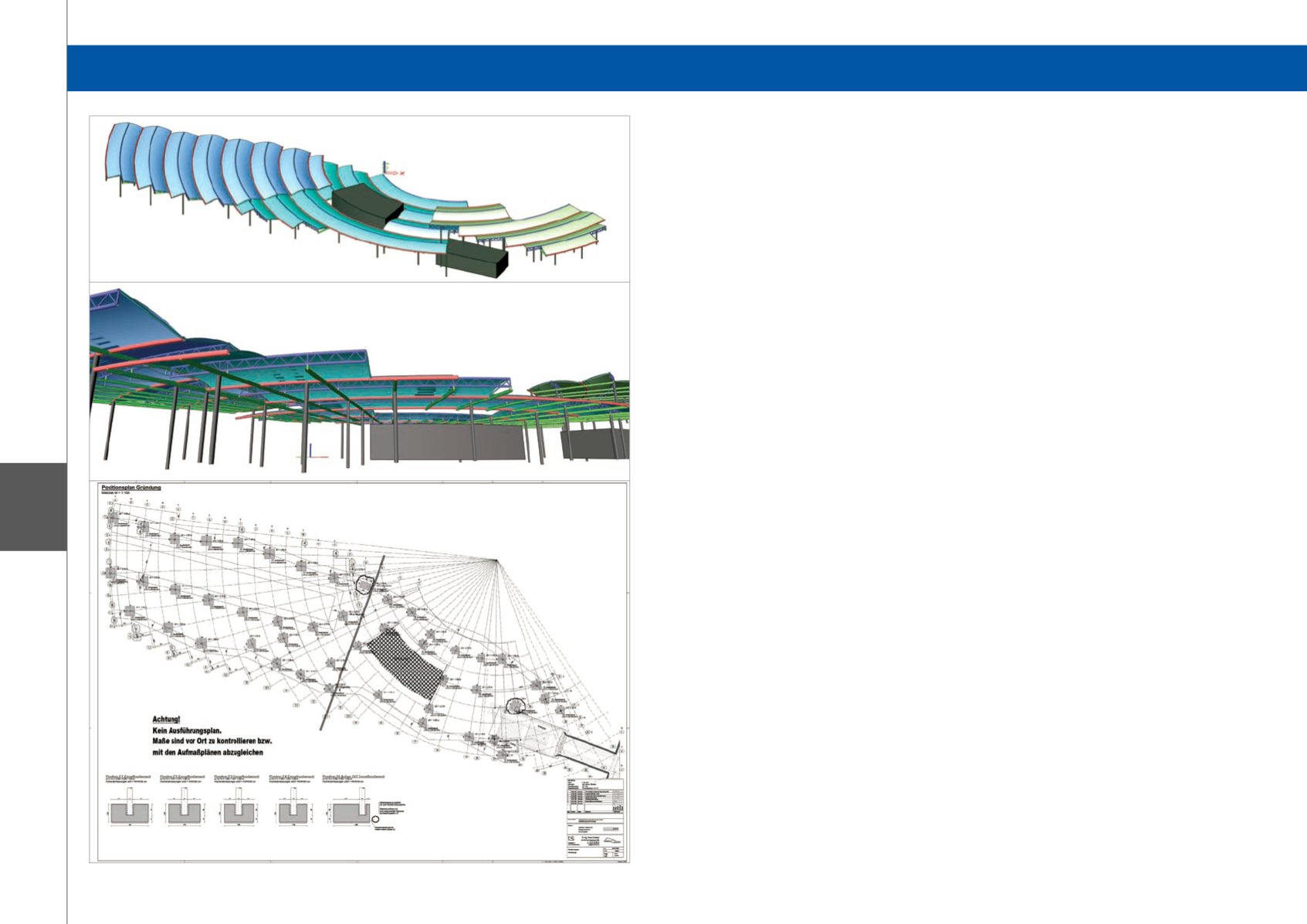
158
X2
Category 2: Civil Structures
The 1970s saw the construction of the traffic court
in Essen-Steele. It forms one of Essen’s main
hubs. The concept, developed during the 1970s, to
transport 20,000 passengers per day on buses to the
central control traffic court, and from there to further
destinations by S-train or tram in the city centre,
remains valid today. However, after more than 30
years, it was decided that the traffic court should have
a makeover. The construction project was planned by
the architects of Essen Transport Ltd. (EVAG). It is
designed to provide more comfort with modernisation
and more accessibility for the disabled. The construction
project was started at the end of 2008. The budget
was set at 9 million euros. After a year and a half of
construction, the revamped facility was launched in
August 2010.
Around 20,000 passengers now use the daily
continuous entry and exit at all levels to trams, buses
and commuter trains. Arrival and departure locations
for the trams were designed so that the buses can be
reached easily. A generous canopy for the traffic centre,
traffic routes and waiting areas was made to ensure a
comfortable transition.
Twelve modern breakpoints are now accessible and
can be reached in bad weather with dry feet thanks
to the new light-flooded roof. The new 3,256 sqm
roof construction is made with a vandal-proof and
self-cleaning film that has already been utilised in the
“Allianz Arena” of FC Bayern Munich. ETFE (ethylene-
tetrafluoroethylene) film, first deployed more than 25
years ago, was the best alternative to expensive glass
roofing for this project. The roof structure is built at three
different heights to allow the use of different means of
transport. Thus, the tram area is built to +5.61 m and
the bus area is built to +4.50 m reaching to the bottom
of the sheet roofing, while the construction reaches to
+8.50 m over the existing staircase to the access bridge
and the transition to the S-Bahn.
The design is described by concentric curves with
sawtooth-shaped transparent foil panels consisting of
pneumatically biased, ultra-thin membrane-cushions
made of ETFE with a span of 3.5 m. The cushions
were calculated using wire-theory and calculations in
the third order for large deformations. There are up
to 19 cushions in a row, all supported by radial steel
substructures made of circular hollow sections with
long trusses in the high points and continuous beams
in the low points. The longest truss is 49 m long and
65 cm high with crossbars. The longest support beam
is 58 m long. Orthogonal to the radial support elements
is an arrangement of crossbeams with partial wire-
reinforcement. The crossbeams are supported by steel
columns in a non-systematic order to meet the demand
for required space for the trams and buses. The
columns are grounded on foundations with quivers to
absorb the resulting moments.
The entire roof was built around a new massive building
containing a ticket sale facility and a kiosk. It was
therefore necessary to interrupt the concentric curves of
the cushion roof.
Photo material: Fotodesign Andreas Braun, Hameln
Redesign of a Traffic Center - Essen, Germany
Software: Allplan Engineering, Frilo Statics, Scia Engineer


